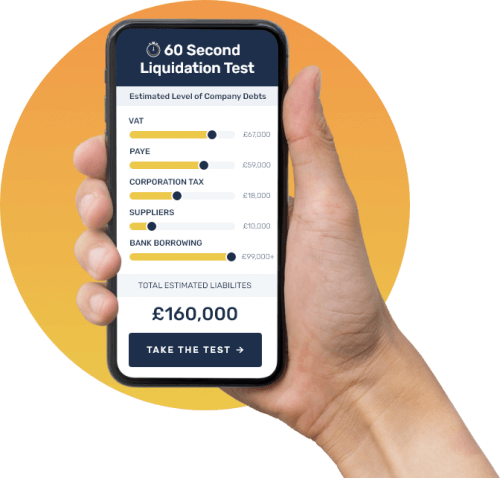Examples of antecedent transactions and the likely consequences
If your company enters Administration or Liquidation, the Insolvency Practitioner who administers the procedure will investigate the business’s affairs and the conduct of the directors in the two years leading up to the insolvency. If they find examples of antecedent transactions, they can ‘set aside’ the transaction by reversing it or recovering the assets involved.
What is an antecedent transaction?
Antecedent transactions are transactions a company performs before it enters a formal insolvency procedure. Specifically, it describes transactions the liquidator or administrator could challenge on the grounds that they took place when the company was insolvent or caused the company to become insolvent.
If they find examples of antecedent transactions, the Insolvency Practitioner (IP) can recover the money or assets involved to boost the return for the company’s creditors. The aim is to put the company in the position it would have been if the transaction had not occurred.
What are examples of antecedent transactions?
An antecedent transaction will usually take the form of one of the following:
Transactions at undervalue
This type of transaction occurs when a company transfers an asset to a third party and there’s no payment in return, or it sells an asset for significantly less than it’s worth. The transaction must occur in the two years leading up to insolvency and either be the direct cause of insolvency or occur when the company is already insolvent.
If the IP proves a transaction at undervalue, the court can make an order to return the company to the position it would have been in if it had not occurred. To defend the claim, the company directors have to prove there were reasonable grounds for believing the transaction would benefit the company and they entered into it in good faith.
Preference payments
A preference payment occurs when you enter into a transaction that puts one of your creditors in a better position than the others in the period leading up to the insolvency. You could show a ‘preference’ by making a cash payment, for example, repaying a loan from a family member, or entering into a transaction, such as transferring a company asset to a business partner.
A transaction can show a preference if it meets all of the following criteria:
- You had a desire to put the creditor in a better position than the others (this desire is assumed in the case of a connected creditor);
- The company could not pay its debts at the time of the transaction or became insolvent because of it;
- The transaction occurred in the six months before the onset of insolvency for unconnected parties or two years before the insolvency if the creditor is a connected party.
If the IP finds a preferential payment, the court can make any order it deems appropriate to return the company to a position it would have been in if the transaction had not taken place.
Extortionate credit transactions
This type of transaction occurs when a third party agrees to provide credit to the company and the terms are unfair or there’s an excessively high rate of interest.
The Insolvency Practitioner can look at transactions that have occurred in the three years leading up to the start of an Administration or Liquidation procedure. If they find evidence of extortionate credit transactions, they can apply to the court for the payments to be recovered or adjusted.
Fraudulent trading
Trading or entering into transactions intending to defraud your creditors is the only antecedent transaction classed as a criminal rather than a civil offence, and serious cases could lead to a custodial sentence.
In cases of fraudulent trading, the Insolvency Practitioner will need to prove that you had the intention to defraud. Examples include deliberately not paying company debts or entering into transactions that you knew you couldn’t fulfil.
Invalid floating charges
If you grant a new floating charge to secure existing lending and do not receive any additional funds from the lender, that floating charge could be invalid and set aside. The IP must prove the company couldn’t pay its debts when you created the charge, or that it became insolvent as a result of the charge. If the lender is a connected party, the charge will be set aside automatically.
Wrongful trading
When a company is insolvent, the directors must act in the best interests of its creditors. Usually, that means ceasing trading immediately. If you continue making transactions to and from the business and subsequently reduce the return for the creditors, you could be liable for some of the company’s debts.
Examples of wrongful trading include the excessive build-up of PAY, VAT and NI debts, directors paying themselves high salaries when the company cannot afford it, and entering into transactions that the company cannot honour.
What are the consequences of antecedent transactions for directors?
If you enter into an antecedent transaction in the period leading up to your company’s insolvency, the IP can apply to the court to set the transaction aside. If the transaction cannot be reversed, you could become personally liable to reimburse the company for the benefit of your creditors.
In serious cases of misconduct, you could also be disqualified from acting as a company director for up to 15 years, and if fraudulent trading is found, you could receive a maximum two-year prison sentence.
How can we help?
If your company is struggling financially, antecedent transactions are something you must be aware of, even when you think you are acting lawfully. At UK Liquidators, we can help you avoid making risky arrangements or entering into transactions that could lead to a threat of personal liability. Contact our team of Insolvency Practitioners for a free, same-day consultation or arrange a meeting at one of our 100+ offices throughout the UK.
If you are considering liquidation for your limited company, taking advice from a licensed insolvency practitioner can help you understand your options.
Take our 60 second test and find out







































